Home > Company > Tire Safety > Choosing Tires > Determining Tire Size
Once you have determined it’s time to buy tires, you’ll need to know what size tires are correct for your vehicle. Depending on what you drive, you may be interested in how to find the right tire for your…
This information is usually inside your car’s doorjamb, in your owner’s manual. To ensure your current tire or a replacement tire you may be looking at matches your vehicle’s requirements, it will be good for you to understand how tire sizing works. You may have never paid attention to the string of numbers and letters on every tire, but it’s a gold mine of information.
If you’re unsure of how to read tire measurements from your tire walls, the information and graphics below will tell you how to read tire size, understand and interpret it. If you decide you want to substitute a new size or tire type, consult an authorized tire retailer who can expertly advise you, because many optional tire sizes may have different load capacities and could require wheels of a different rim width or diameter and different inflation pressure.
Not sure you need new tires? Our Tire Replacement Guidance article will help you determine whether it’s time to retire your tires.
Most passenger cars, SUVs and light pickups (1/2 ton and smaller) will come with tires that are either P-Metric or Euro-Metric. For P-Metric tires, you’ll see the letter “P” before the number sequence begins: P225/70R16 97H. P-metric is a designation standardized by the Tire and Rim Association for a “passenger car” tire type. For Euro-Metric there will be no preceding letter before the number sequence begins: 225/70R16 98H. Euro-Metric is a designation standardized by the European Tyre and Rim Technical Organization for a “passenger car” tire type.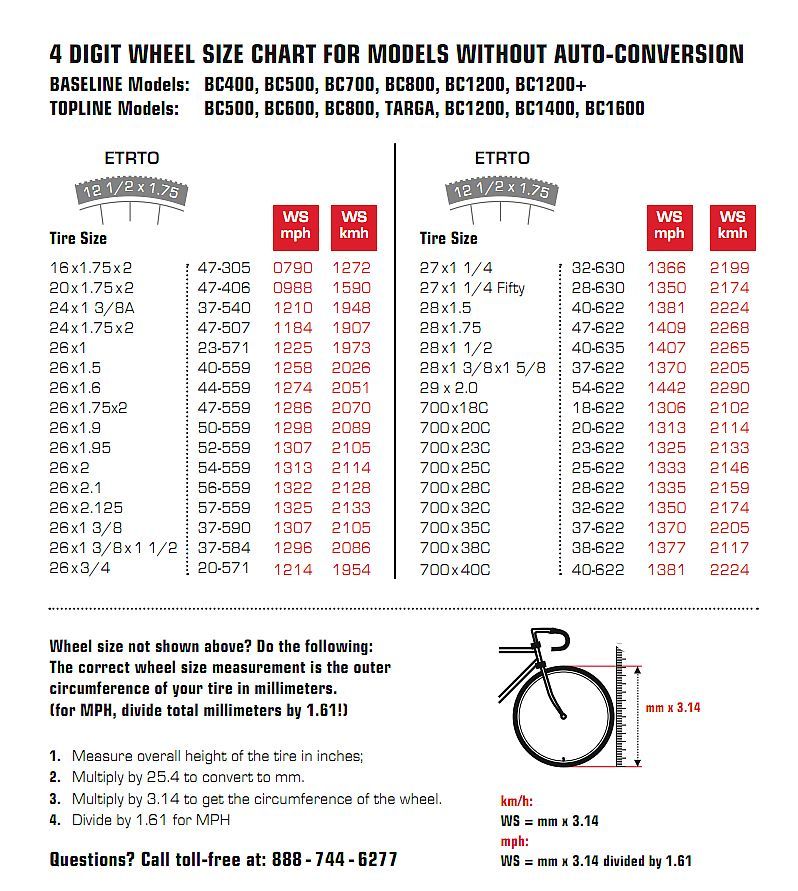 Both P-Metric and Euro-Metric size tires are designed to primarily be used on passenger vehicles, which can include cars, minivans, SUVs, and other light duty pickup trucks.
Both P-Metric and Euro-Metric size tires are designed to primarily be used on passenger vehicles, which can include cars, minivans, SUVs, and other light duty pickup trucks.
If your vehicle is an SUV, Pickup truck or van, you might see a different type of size designation on your placard that is specific for heavy duty light trucks and vans, especially common on ¾ ton and larger pickup trucks and vans. There are two common size types in this category, LT-Metric and Euro-Metric Commercial (aka C-type). Both size types are metric and so use the same structure as P-Metric and Euro-Metric but have some different characters in the size that differentiate them from their passenger car cousins. LT-Metric tires will have the letters “LT” before the size number sequence: LT245/75R17 119/116R Load Range E. Notice that there are two load index numbers and a Load Range, see the section on Load Index for more info. LT-Metric is a designation standardized by the Tire and Rim Association for a “light truck” type tire. Euro-Metric Commercial or C-Type tires will look very similar to a passenger Euro-Metric size except that there will be a “C” right after the rim size: 23/65R16C 121/119R. Notice that the C-type tires also have two load index numbers. Euro-Metric Commercial, or C-Type is a designation standardized by the European Tyre and Rim Technical Organization for a light truck type tire. Light truck tires are designed to be used on vehicles capable of carrying heavy cargo and are usually only specified by a vehicle manufacturer on vehicles exceeding a certain load capacity.
Euro-Metric Commercial or C-Type tires will look very similar to a passenger Euro-Metric size except that there will be a “C” right after the rim size: 23/65R16C 121/119R. Notice that the C-type tires also have two load index numbers. Euro-Metric Commercial, or C-Type is a designation standardized by the European Tyre and Rim Technical Organization for a light truck type tire. Light truck tires are designed to be used on vehicles capable of carrying heavy cargo and are usually only specified by a vehicle manufacturer on vehicles exceeding a certain load capacity.
Other types of tires that fall into the Metric sizing type are Temporary Spares, they start with “T”. If you see a size that starts with “ST,” that means “special trailer” and is only for use on a trailer.
Regardless of whether you are looking at a P-Metric, Euro-Metric, LT-Metric, Euro-Metric Commercial, T or ST tire the numbers in the size mean the same thing.
The first number to appear in your tire size information is the width, in millimeters, of the correct tires for your vehicle: P225/70R16 91S.
Tire width always refers to the measurement from one sidewall to another. Thus, a tire with the measurement “P225” is for a passenger vehicle and has a nominal width of 225 millimeters.
After the slash mark, the next number you see is for the tire’s aspect ratio, which essentially tells you how tall your tire’s profile is: P225/70R16 91S. Aspect ratios are delivered in percentages. Tire makers calculate the aspect ratio by dividing a tire’s height off the rim by its width. If a tire has an aspect ratio of 70, it means the tire’s height is 70% of its width.
Lower aspect ratio tires, such as a 60 series, generally offer vehicle handling performance advantages over higher aspect ratio tires, such as a 75 series, but a typical trade off can be ride harshness.
After the aspect ratio comes a letter that indicates the type of internal construction maintaining your tire’s stability: P225/70R16 91S.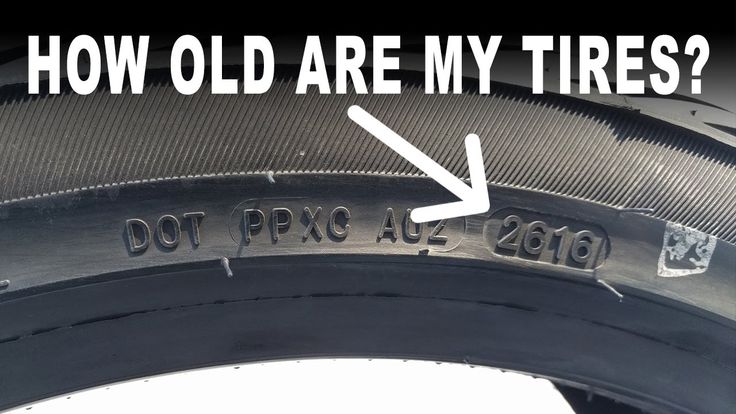
There are two types of construction that you may see on the sidewall of a tire:
Radial tires are the most common tires on the road in the United States today; thus “R” will usually be shown in the tire size designation. Radial construction means the tire’s internal ply cords are oriented in a radial direction, from one bead over to the other, essentially perpendicular to the direction of rotation. You may also occasionally see RF indicating a run flat tire or ZR indicating a tire that is a speed rating higher than V.
The next number is the diameter code, in inches, of the rim onto which the tire can be mounted. For example, a tire with the P225/70R16 91S would fit a rim with a 16-inch diameter.
Load index can be a confusing subject because there are so many different caveats, but we will try to explain everything here.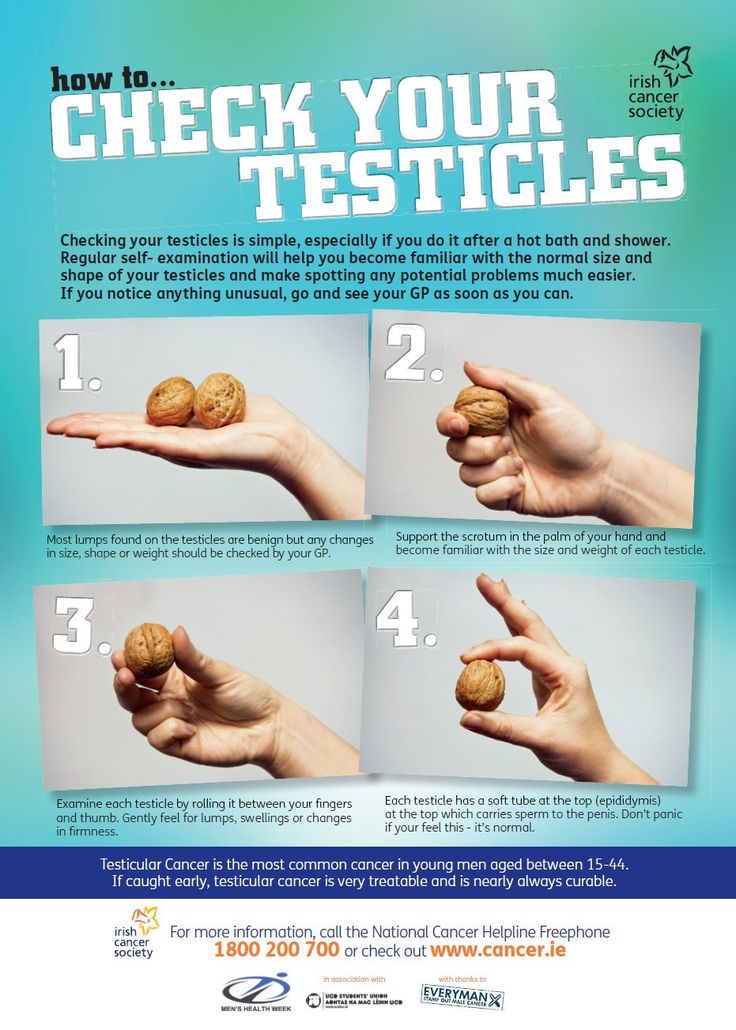
The next figure after the rim size in the sequence is your tire’s load index, which tells us how much weight, in pounds, the tire can support when fully inflated: P225/70R16 91S
We call it the load “index” because the number doesn’t tell us the precise number of pounds the tire can carry, at least not by itself. However, the number does correspond to a specific load capacity listed in an index. Beginning with 1 and ending with 150, numbers in the load index represent carrying capacities of 99 to 7385 lbs.
There are two types of load types for passenger tires though, Standard Load and Extra Load. If a tire is Standard Load there will be no markings indicating it but if it is Extra Load the letters XL will appear after the size and load index.
Standard Load Euro-Metric: 215/55R17 94V
Extra Load Euro-Metric: 215/55R17 98V XL
Passenger car tires like P-Metric and Euro-Metric will only have one load index number where LT-Metric and Euro-Metric Commercial (C-Type) will have two numbers separated by a slash.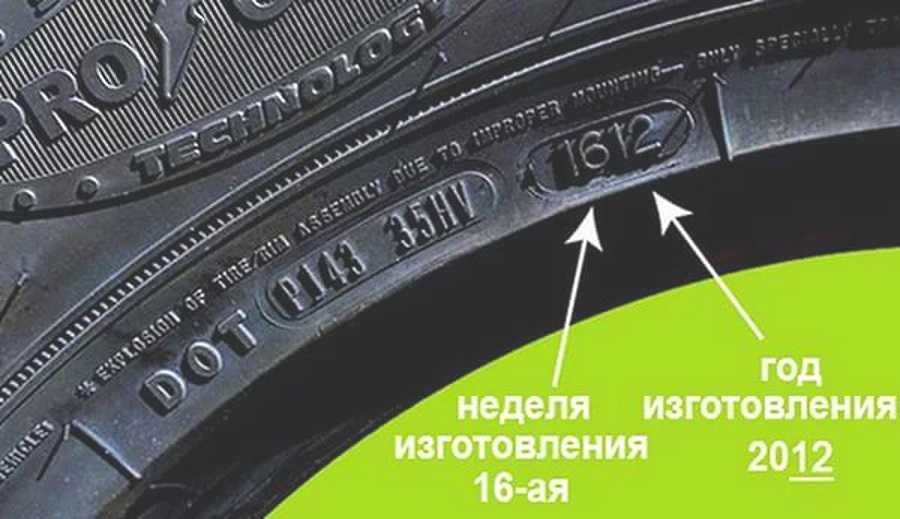 The first number is the load index if the tire is used in a single application, the second number is the load index if the tire is used in a dual application. Passenger type tires cannot be used in a dual application. Light truck tires will also have a Load Range that is indicated by a letter, such as Load Range E. Load Range is an older term that is still commonly used in the industry so you may hear your tire dealer reference it but the load index numbers are the best way to ensure you have the proper tire.
The first number is the load index if the tire is used in a single application, the second number is the load index if the tire is used in a dual application. Passenger type tires cannot be used in a dual application. Light truck tires will also have a Load Range that is indicated by a letter, such as Load Range E. Load Range is an older term that is still commonly used in the industry so you may hear your tire dealer reference it but the load index numbers are the best way to ensure you have the proper tire.
One important but often misunderstood facet about load index is that the load index numbers between standards organizations (P-Metric vs Euro-Metric) are not necessarily on the same scale. Meaning that two tires in the two different systems that have the same load index number could have different maximum load capacities. This is why it’s important to not only look at the load index number but also verify the actual load capacity.
The final figure in a tire size sequence is the speed rating, which is indicated by a letter: P225/70R16 91S. Just as your load index number corresponds to a specific load, your speed rating letter corresponds to a particular speed capability based on a standardized laboratory test.
Just as your load index number corresponds to a specific load, your speed rating letter corresponds to a particular speed capability based on a standardized laboratory test.
For example, a tire with speed rating “S” is rated for up to 112 mph, while a tire rated “R” is up to 106 mph. Remember that this isn’t a recommended cruising speed. Of course, you should always follow legal speed limits on roadways.
Replacement tires must have the same or higher speed rating as the vehicle’s Original Equipment to maintain vehicle speed capability. If a vehicle has tires with different speed ratings, it is the speed rating of the “slowest” tire that dictates the vehicle top speed.
There is one last sizing type that you should know about, especially if you are in the market for off road tires for a light truck or SUV. It’s called a Flotation size and the numbers in this sizing format are very different from the Metric formats.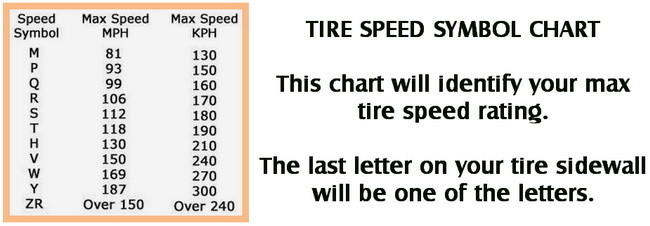 Flotation sized tires are similar to LT-Metric tires in application except for a few important points. Number one, they cannot be used in dual applications and number two, an equivalent size tire may have different load capacity than its LT-Metric counterpart.
Flotation sized tires are similar to LT-Metric tires in application except for a few important points. Number one, they cannot be used in dual applications and number two, an equivalent size tire may have different load capacity than its LT-Metric counterpart.
The first number in the Flotation tire size is the overall diameter in inches. Pretty straight forward.
The second number is the section width (sidewall to sidewall) measurement in inches. Again, fairly simple.
After the section width comes a letter that indicates the type of internal construction: 33X12.50R17LT 120Q.
This is the same as is found in the metric sizing systems.
There are two types of construction that you may see on the sidewall of a tire:
Radial tires are the most common tires on the road in the United States today; thus “R” will usually be shown in the tire size designation. Radial construction means the tire’s internal ply cords are oriented in a radial direction, from one bead over to the other, essentially perpendicular to the direction of rotation.
Radial construction means the tire’s internal ply cords are oriented in a radial direction, from one bead over to the other, essentially perpendicular to the direction of rotation.
The next number is the diameter code, in inches, of the rim onto which the tire can be mounted. For example, a tire with the 33X12.50R17LT 120Q would fit a rim with a 17-inch diameter.
The letters LT will be after the Rim Diameter indicating that this tire type is intended for Light Truck vehicles similar to the LT-Metric and Euro-Metric Commercial (C-Type) tires.
Load Index and Speed Rating have the same meaning and format as the tires using the metric sizing system. Note that since flotation tires cannot be used in a dual application there will be only one load index number instead of two.
Another group of stamping on certain types of tires is the Uniform Tire Quality Grading or UTQG. This grading and stamping is required for passenger car tires (i.e. P-metric and Euro-metric) in the all season and summer categories. Dedicated winter tires, Light Truck (LT-Metric, Euro-Metric Commercial, Flotation) and Motorcycle tires are excluded from this requirement.
Quality grading is designed to make the tire purchase decision easier for you. Ideally, the system is intended to provide simple, comparative data so you can make an intelligent buying decision. However, the ratings are based upon test results achieved under special conditions. This means it’s possible to misinterpret the comparative data as it relates to your individual driving habits, conditions, etc. You should still rely on your service or tire professional for assistance.
Quality grading designates the comparative performance levels of a tire based on government-specified tests but commissioned by the individual tire manufacturers. All tire manufacturers are required to grade regular and all-season passenger tires in three categories:
All tire manufacturers are required to grade regular and all-season passenger tires in three categories:
UTQG
Treadwear
The treadwear grade is a comparative rating based on the wear rate of the tire when tested under controlled conditions on a specified government test course for 6,000 miles (9,600 km). For example, a tire graded 150 would wear one and a half times as well on the government course as a tire graded 100. However actual tire performance depends on driving habits, road characteristics, service practices, and other factors that can influence the outcome.
Traction Grades AA, A, B and C
The traction grades from highest to lowest are AA (the highest), A, B and C. They represent how well tires stop on wet pavement as measured under controlled conditions on specified government test surfaces of asphalt and concrete. C-rated tires will have the lowest traction performance.
WARNING: THE TRACTION GRADE ASSIGNED IS BASED ON A WET BRAKING (STRAIGHT AHEAD) TRACTION TEST AND DOES NOT INCLUDE CORNERING (TURNING) TRACTION.
Temperature Grades A, B and C
The temperature grades A, B, and C represent the tire's resistance to the generation of heat and its ability to dissipate heat when tested under controlled conditions on a specified indoor laboratory test wheel. Sustained high temperature can cause the tire’s material to degenerate and reduce tire life, and excessive temperature can lead to sudden tire failure. The grade C corresponds to a performance level all passenger car tires must meet under the Federal Motor Vehicle Safety Standard No. 109. Grades A and B represent higher levels of performance on the laboratory test wheel than the minimum required by law.
WARNING: THE TEMPERATURE GRADE IS ESTABLISHED FOR A TIRE THAT IS PROPERLY INFLATED AND NOT OVERLOADED. EXCESSIVE SPEED, UNDER INFLATION, OR EXCESSIVE LOADING, EITHER SEPARATELY OR IN COMBINATION, CAN CAUSE HEAT BUILDUP AND POSSIBLE TIRE FAILURE.
DOT Quality Grades
All passenger car tires must conform to other federal requirements in addition to these grades.
Learn about our mission, our achievements, and our ongoing commitments
Read Our Origin Story
Installing the right tires on your vehicle is essential to the overall performance and safety of your vehicle. Your tire choice should reflect the conditions in which you drive and your preferences for vehicle response and handling. To make the most informed decision, though, you must understand how to read tire size when it's time to buy tires.
Thankfully, determining the correct tire size for your vehicle is relatively simple. All the information you need is immediately available either in your owner's manual or somewhere on the vehicle itself. Already know how to read tire size numbers? Skip the explanation and find the right Bridgestone tire for your vehicle online or by visiting a Bridgestone tire dealer near you.
While actual, physical measurements like width and diameter are factors in finding the right tire size, there are additional details to consider. Knowing how to read car tire sizes also means understanding terms like load index and speed rating that affect your vehicle's overall capabilities.
No matter what vehicle you drive, finding the manufacturer-recommended tire size should be easy. The best place to start looking is the owner's manual.
Don't worry if you can't locate the manual; you may also find a tire fit guide in these locations:
You can also find tire size data on the sidewall of your current tires (assuming they're the proper size). However, no matter where you find your tire size, you will have to decipher a sequence of numbers and letters. Don't worry if it looks confusing at first — every letter and number has a straightforward meaning.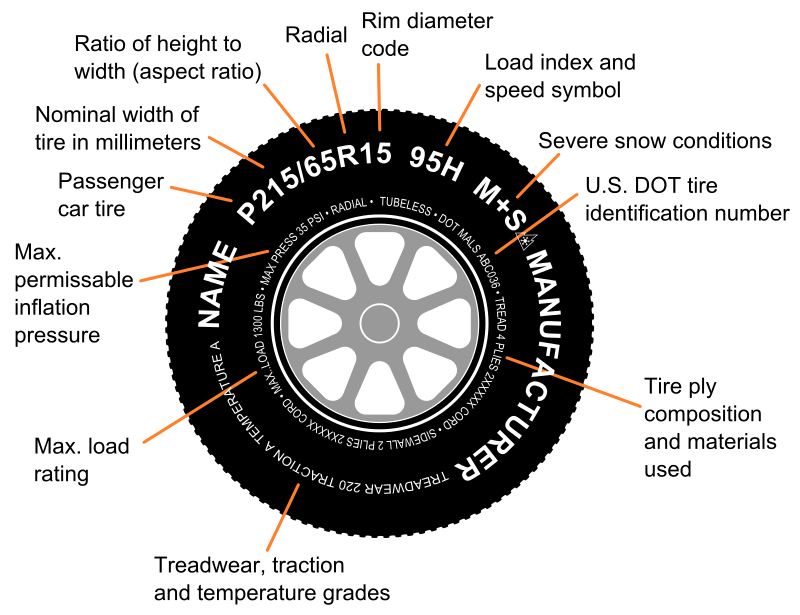 Let's break down how to read car tire size.
Let's break down how to read car tire size.
Let's take a look at what each number or letter stands for, one by one, in the order they appear in your tire size data. We'll be using this tire size as an example: P225/70R16 91S.
For most vehicles, you'll see the letter "P" before the number sequence begins: P225/70R16 91S. The "P" is short for "P-metric," which is a designation by the Tire and Rim Association for a "passenger car" tire type. A "P" signifies the tire was designed to primarily be used on passenger vehicles, which can include cars, minivans, SUV's and other light-duty pickup trucks.
If you see "LT" instead of "P," it's because you need "light truck" tires – "LT" is short for "LT-metric," which is a designation by the Tire and Rim Association for a "light truck" type tire. Light truck tires are designed to be used on vehicles capable of carrying heavy cargo or pulling trailers.
Similarly, "T" stands for "temporary" and is for your spare tire.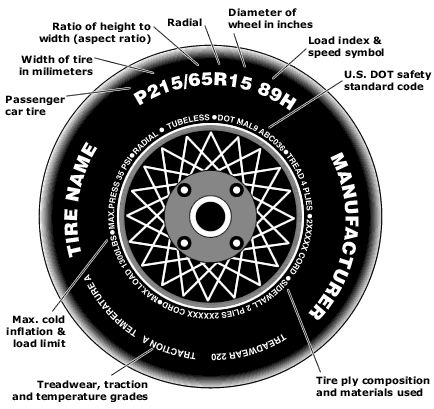 If you see "ST," that means "special trailer." A special trailer tire is never installed on the drive or steer wheels. It's only intended for use on trailer axles.
If you see "ST," that means "special trailer." A special trailer tire is never installed on the drive or steer wheels. It's only intended for use on trailer axles.
The first number to appear in your tire size information is the width, in millimeters, of the correct tires for your vehicle: P225/70R16 91S.
Tire width always refers to the measurement from one sidewall to another. Thus, a tire with the measurement "P225" is for a passenger vehicle and has a nominal width of 225 millimeters.
After the slash mark, the next number you see is for the tire's aspect ratio, which essentially tells you how tall your tire's profile is: P225/70R16 91S. Aspect ratios are delivered in percentages. Tire makers calculate the aspect ratio by dividing a tire's sidewall height by its width. If a tire has an aspect ratio of 70, it means the tire's height is 70% of its width.
Lower aspect ratio tires, such as a 60 series, generally offer vehicle handling performance advantages over higher aspect ratio tires, such as a 75 series.
After the aspect ratio comes a letter to indicate the tire's construction: P225/70R16 91S. "R" refers to the internal structure of your tire and gives you a general idea of its stability.
There are two types of construction that you may see on the sidewall of a tire
"Bias-ply" tires were used on automobiles and light trucks until the '70s," reports the classic car site, Hemmings. But radial tires represent the vast majority of tires on the road in the United States today. In fact, you will almost always see the letter "R" on tires as radial tires have been the industry standard for over 40 years. Radial construction means the tire's internal ply cords are oriented in a radial direction (at 90 degrees to the centerline of the tread).
The next number is the wheel’s diameter. For example, a tire with the P225/70R16 91S would fit a rim with a 16-inch diameter.
Take note: if you decide to change your rims' size, you will also need to get new tires that are compatible with the change in size.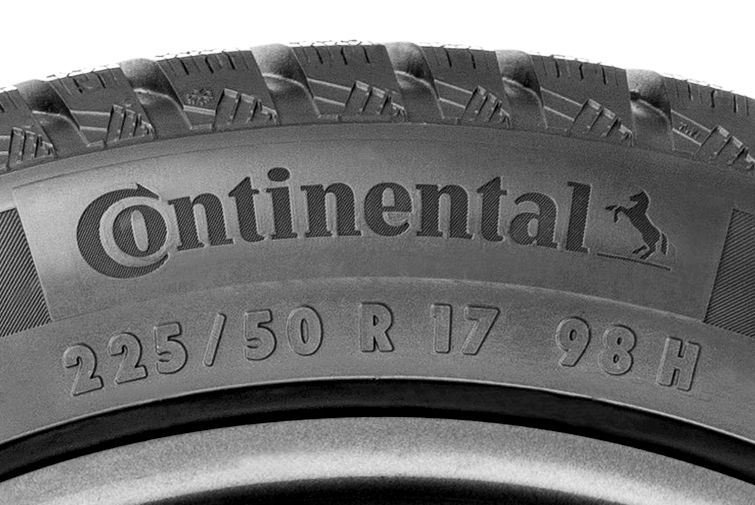 Tires designed to fit a 16-inch wheel diameter will not stretch to fit on new 18-inch rims.
Tires designed to fit a 16-inch wheel diameter will not stretch to fit on new 18-inch rims.
View Other Common Diameter Sizes:
14-Inch Diameter Tires
15-Inch Diameter Tires
17-Inch Diameter Tires
18-Inch Diameter Tires
19-Inch Diameter Tires
20-Inch Diameter Tires
21-Inch Diameter Tires
22-Inch Diameter Tires
The next figure needed to read tire size numbers is your tire's load index. The load index tells us how much weight, in pounds, the tire can support when fully inflated: P225/70R16 91S.
It is called the load "index" because the figure doesn't tell us the precise number of pounds the tire can support, at least not by itself. Instead, the number corresponds to a specific load capacity listed in an index. Beginning with one and ending with 150, numbers in the load index represent carrying capacities of 99 to 7385 lbs.
Additionally, you may not find this number present on all tires. This is because the load index is not required by law to be printed on tires. If there is no load index measurement on your tires, check the owner's manual or contact your local Bridgestone tire dealer for more information.
If there is no load index measurement on your tires, check the owner's manual or contact your local Bridgestone tire dealer for more information.
The final figure in a tire size sequence is the speed rating indicated by a letter: P225/70R16 91S. Just as your load index number corresponds to a particular load, your speed rating letter corresponds to a specific speed capability based on a standardized laboratory test.
For example, a tire with a speed rating "S" is rated for up to 112 mph, while a tire rated "R" is up to 106 mph. Remember that this isn't a recommended cruising speed, but rather the maximum speed that tire type can withstand. Of course, you should always follow legal speed limits on roadways.
Here are the most common letters for speed ratings and their corresponding maximum speeds:
Tires with higher speed ratings tend to offer increased handling performance.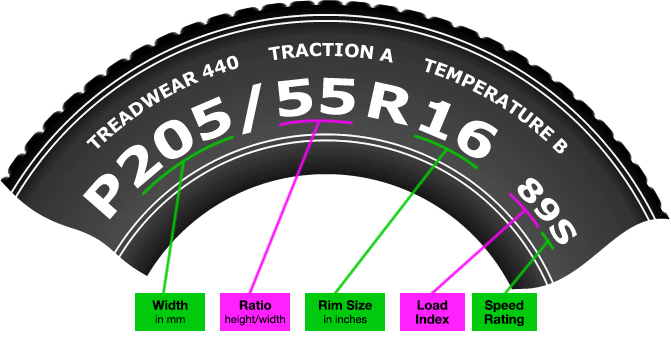 Replacement tires must have the same or higher speed rating to maintain vehicle speed capability. If a vehicle has tires with different speed ratings, the speed rating of the "slowest" tire dictates the vehicle's top speed.
Replacement tires must have the same or higher speed rating to maintain vehicle speed capability. If a vehicle has tires with different speed ratings, the speed rating of the "slowest" tire dictates the vehicle's top speed.
Like the load index, the speed rating is not required by law to be listed on all tires. If your tires do not have the speed rating listed, your owner's manual will have the relevant information for your model's stock tire type.
You may find "M+S" or "M/S" after the main tire size sequence on some tires. This indicates that the tire has some capacity to handle snow and mud conditions. This indication is common on most radial or "R" type tires.
You may notice another set of letters and numbers on your tire's sidewall beginning with "DOT." This is not an indication of tire size, but rather that the tire complies with Federal Motor Vehicle Safety Standards. The "DOT" stands for Department of Transportation and is followed by the tire identification number.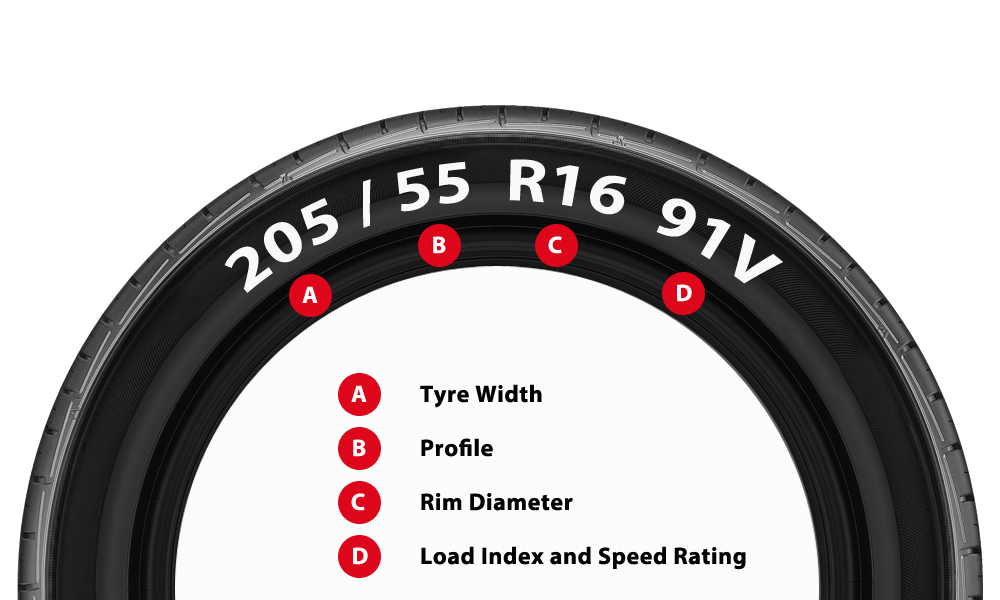
The first two letters or numbers after DOT refer to the manufacturing plant where the tire was produced and the last four numbers indicate the week and year the tire was made. The numbers 4318, for instance, indicate that the tire was manufactured during the 43rd week of 2018.
While it's certainly possible to upgrade your tires' size, it's usually best to stick to your manufacturer-recommended tire size for optimal performance. Increasing the size of your tires may give your car more ground clearance, but it may also affect handling, drivetrain performance and fuel economy. Keep in mind the changes to key figures mentioned above, such as load index and speed rating, and how they may affect your vehicle's capabilities if you decide to increase tire size.
Once you know how to read the numbers on tires, you can explore tires by size and narrow down your tire options quickly. Compare tire sizes online or visit a Bridgestone tire dealer near you for help.
Season
SelectReset filter
extended selection
How to find out the correct tire size for your car?
29.06.2019
Author: Sergey Akhmetov
Views: 33144
If you don't know what size of tires should be on your car or are not sure that the size recommended by the manufacturer is currently installed on it, then you are at the right place.
Here is 7 ways to find out the correct tire size for your car:
1. View the size on the sidewall of the tire that is currently installed on the car
You can read how it looks and how to read the designations on tires correctly in our article “Tyre marking: basic parameters”. This method is suitable if you know that the car has factory tires or that the car is still under warranty. Otherwise, read on.
2. See the recommended tire sizes depending on the car model:
- on the inside of the glove compartment
- on the end of the driver's door
- on the side of the car
- on the inside of the gas tank hatch
3.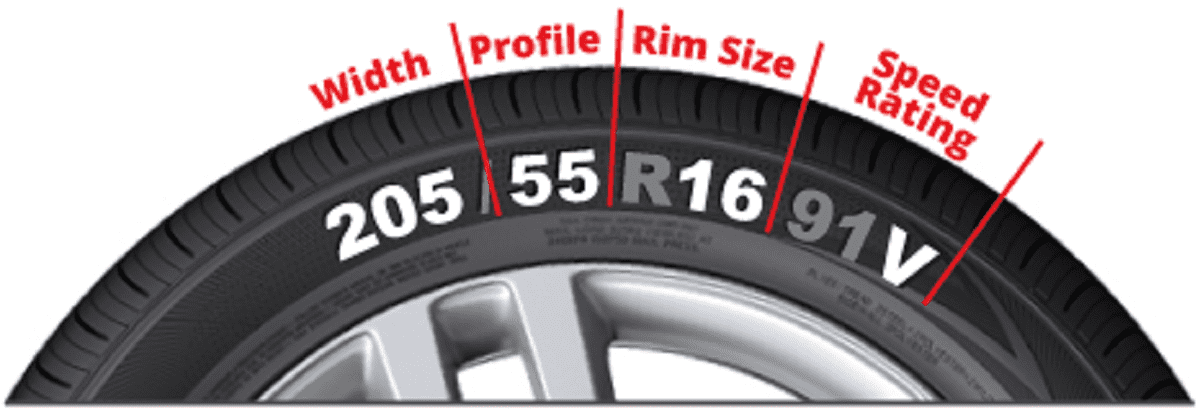 Look at the operating manual of your car
Look at the operating manual of your car
as As a rule, the relevant section (Chassis, Tires / Wheels, etc.) contains information on the permissible rubber sizes.
4. Look at the website of the car manufacturer or its dealer
This method may suit you if the car is still being produced and sold. In this situation, data on the sizes of tires and wheels, as a rule, is contained in the "Technical Specifications" or "Car Equipment" section.
5. Call the official service that serves your brand of car
other car. The same applies to absolutely new models on the market - especially Chinese ones. Sometimes, except for the "officials", no one knows what tires and wheels can be put on them.
6. Use the selection of tires by car brand
Specialized online stores have the service "Selection of tires by car brand", which allows you to immediately determine by manufacturer, model, year and engine size which tire sizes and for which diameter can be put on the car.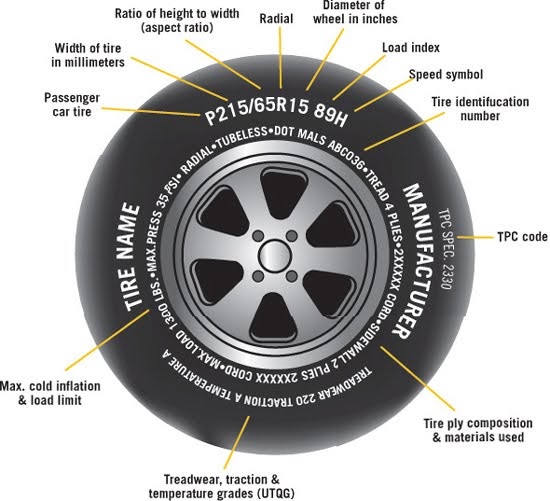 Here you can see not only your factory size, but also alternative options, if, for example, there is a need to switch to smaller / larger diameter rims, install tires of different widths, etc.
Here you can see not only your factory size, but also alternative options, if, for example, there is a need to switch to smaller / larger diameter rims, install tires of different widths, etc.
7. Find information on the forum of the owners of your car model
It is often on the forums of car owners that you can quickly find all the necessary information not only on tires, but also on many other issues. People there, as a rule, are active and ready to share various kinds of information with like-minded people.
Whatever method you choose for yourself, it is important to understand that the correct size of tires on a vehicle is:
We also recommend that you always consult a competent person before installation. Our managers are always ready to help you in solving a variety of issues.
Our managers are always ready to help you in solving a variety of issues.
If you managed to decide on the correct tire size, then we suggest proceeding to the next step - Choosing tires.
Contents
All over the world, motorists often face the difficulty of changing rims. This happens due to forced circumstances - with their defects, wear, malfunction, or at the request of the owner himself because of their not very presentable appearance, inappropriate dimensions, or on other grounds.
The automotive market is always happy to offer its customers a wide range of accessories for different tastes and budgets. Consider how to find out the size of a car wheel disk in order to select the appropriate configurations and avoid selection difficulties.
The basic size of the disks is a specific set of wheel configurations that are put on the vehicle at the automobile factory in accordance with all the conditions of the technology, the class of the car, as well as the strength studies carried out by the engineers of the concern.
When leaving the factory, the machine acquires the following regular characteristics of rims:
The dimensions of the edge of the rim, necessary for reliable mounting of the tire, are indicated by the letter symbols J or JJ. This marking is suitable for wheels of all passenger cars, regardless of make and model.
The thickness of the rim of the product is calculated in inches with a distance of 0.5 units. The final dimension of the rubber depends on it. In standard vehicle modifications, this size is from 4 to 12 inches, which corresponds to a tire with a offset of 145-345 mm.
The most significant value is the radiality of the disk, which is determined without taking into account the edges of the rim diameter and is calculated in inches from 12 to 24. It is written as R12, R13 ... R21, R22, R23, etc. The radiality of the tire depends on this value, which must correspond to this parameter, as well as its profile, which depends on the configuration of the wheel arch and the technical parameters of the manufacturer.
Also, the factory takes into account the range of wheel offsets necessary for a certain brand, that is, the value of the ET disk offset, which will indicate the distance from the place where the disk is attached to the hub to its internal mating plane of the disk. The longer the offset ET, the deeper the tire will be fixed under the wheel arch.
If the above indicators allow you to indicate a small variation in the dimensions of the wheels, then parameters such as disc bolt pattern and drilling should remain the same, otherwise the rubber will not be put on the hub. So:
disc bolt pattern is a value that calculates the number and length of the studs on the hub. Designed to fix the wheel. For example, in small cars, studs are usually made with a 4 * 9 offset8, 4 * 100, that is, the disk is fixed to 4 anchors, each 98 or 100 mm long. In business class cars or SUVs, the number of fasteners is from 4 to 10 pieces, and their length expands to 140 mm.
drilling (PCD) - an indicator of the mounting hole of the disk, thanks to which it is installed on the axle. Its dimensions range from 50 to 120 mm, depending on the brand, model and class of car.
Each factory disk on the machine is, of course, marked, and upon visual inspection, you can find a line with the indicators listed above on it. If due to circumstances, for example, in case of wear of the disk, these parameters are not visible, then the wheel can be measured independently and its marking can be set. Proceed as follows:
To determine the width of the disk, it is measured with a tape measure or ruler, the rim of the product in millimeters, and then the resulting distance is divided by 25.4 mm to convert to inches.
In a similar way, the radiality of the disks is determined, only here their diameter is measured. Some people think that the R symbol means the radius of the rim, but this is incorrect, as this is the necessary distance between two distances on the wheel rim from the center of the rim. The resulting data should be divided by 25.4 mm to get the result in inches.
The resulting data should be divided by 25.4 mm to get the result in inches.
The greatest difficulty is the measurement of wheel offset, that is, the ET indicator. To do this, you need to remove the wheel, lay it flat on the ground, put a wooden rail on it, equal to the diameter of the metal part of the disk. Then measure the gap to the mating plane of the product in mm. Turn the wheel 180° and repeat the procedure on the reverse side. Substitute the data into the formula for finding ET \u003d (X + Y): 2, where X is the first indicator, Y is the second indicator, and ET is the desired departure size. All results will be in millimeters.
To determine the PCD or the diameter of the central hole of the disk (DIA), the motorist only needs to measure the maximum distance between the edges of the perforations, and then find the nearest value from the table of deviations and correspondences. The indicator of the holes of the wheel disc depends on the structure of the hub for a particular brand of machine
.
On all original factory wheels, the car owner has access to a marking where the dimension of this product is registered. For the correctness of actions, it is worth familiarizing yourself with some illustrative examples:
When changing wheels to more attractive ones, the owner of the Lada sees the inscription on the disk 5.5J * 15 ET 42 d56.1 4 * 98, which means: a rim rim 5.5 inches wide, edge configuration J, not disassembled (marking "x"), 15 inch radius, 42 mm wheel offset, 56.1 mm drilling (drill hole diameter), bolt pattern for 4 studs of 98 mm each.
The designation J depends on the class, model and weight of the car, it can be replaced by JJ, K, JK, B, P and D, which corresponds to the marking of the purchased disk.
Also on the wheel are hampa or H markings, for example 6.0J * 17 h3 ET38 d65.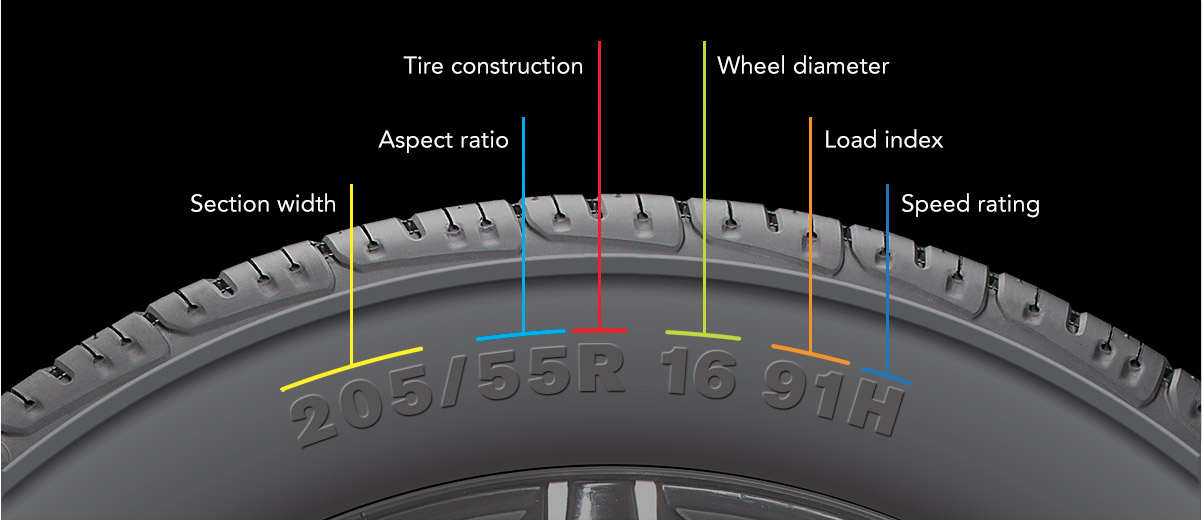 1 5 * 112. This hump consists of special protrusions along the sides that increase the strength of the attachment to the rubber disk. This parameter can be marked as H - single, on one wheel side, H2 - double, from edge wallpaper or X - truncated.
1 5 * 112. This hump consists of special protrusions along the sides that increase the strength of the attachment to the rubber disk. This parameter can be marked as H - single, on one wheel side, H2 - double, from edge wallpaper or X - truncated.
For drivers of pickups, minivans and other vehicles intended for the transport of goods, the values \u200b\u200bof the greatest load are indicated, which are marked as follows - Max Load 2000Lb. This figure will indicate the largest load of 2000 pounds (910 kg when translated).
An important strength parameter is the tire and rim pressure marking, which is expressed as Max PSI 50 Cold, where the highest tire pressure should not exceed 3.5 kg per cm².
The last thing that can be found on the rim is the SAE lettering. TUV, ISO or Rostest, indicating that the product has passed the necessary certification after a series of tests and fully meets the requirements of international and Russian standards.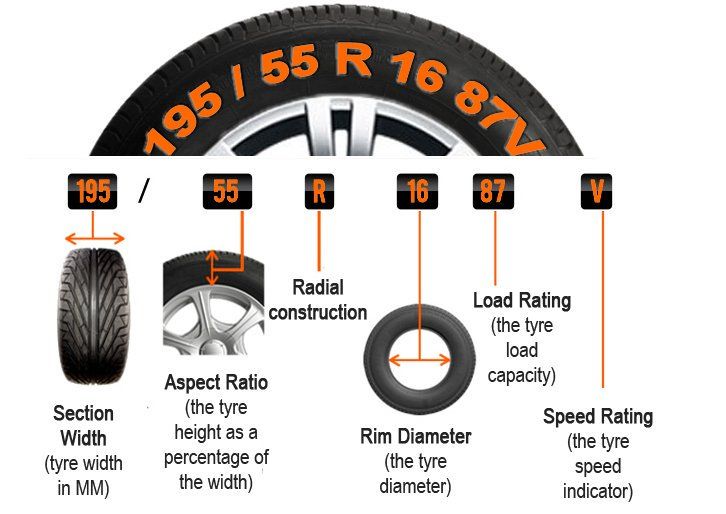
Quite often, the car owner does not seek to deviate from the disk configuration prescribed by the automobile manufacturer. Then it is enough for him to purchase rims according to the same parameters that the manufacturer set. It is important to note that an erroneously selected size of products often leads to rapid wear of hubs, calipers, brake systems and other parts of the suspension, which contributes to the expenditure of significant amounts during repairs.
The most preferable and competent choice of rims for a particular car model is a purchase at a dealership from a brand distributor. For example, official auto enterprises often provide rims not only of their own production, but also accredited analogues.
In most large sales centers, consultants have special software installed that helps to easily determine the given disk sizes. When contacting the center manager, who will fill in the appropriate fields in the program on the computer - the brand, model and variation of the vehicle, year of manufacture, and other data, you can get a whole list of suitable disks that correspond to the geometric characteristics of the client's car.